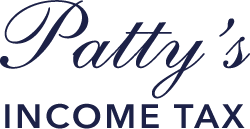What is ‘Tax Return’
A tax return is the tax form or forms used to report income and file income taxes with tax authorities such as the Internal Revenue Service (IRS) in the United States. Tax returns allow taxpayers to calculate their tax liability and remit payments or request refunds, as the case may be. In most countries, tax returns must be filed every year for an individual or business that received income during the year, whether through wages, interest, dividends, capital gains or other profits.
BREAKING DOWN ‘Tax Return’
In the U.S., individuals use Form 1040, corporations use Form 1120, and partnerships use Form 1065 to file their annual returns, while investment income is recorded on Form 1099.
Typically, a tax return begins with an identification section and is then divided into three main sections: income, deductions and credits. The return itself is only a few pages long, but depending on the type of income declared or the credits and deductions requested, there can be several schedules that need to be added on.
Income
In this part of the return, the person preparing it must indicate all forms of income received during the year from all sources. Salaries, dividends, royalties and, in many countries, capital gains must be reported.
Deductions
Taxpayers will then be entitled to various deductions. These vary greatly from jurisdiction to jurisdiction, but typical examples include contributions to retirement savings plans, alimony paid and interest deductions on certain loans. For businesses, all expenses incurred in order to conduct the business is deductible.
At this point in the return, the taxpayer will be able to determine his taxable income and tax payable.
Credits
The next section of the return deals with any tax credits that the taxpayer may be entitled to. Again, these vary greatly from jurisdiction to jurisdiction, but there are often credits attributed for dependent children, old age pensions, education and many more. The total credits are subtracted from the taxpayer’s tax payable.
The end of the return is used to calculate if the taxpayer has an amount to pay or is entitled to a refund. Most salaried employees have taxes withheld at source on each pay, so they may be entitled to a refund if too much tax has been withheld during the year. Similarly, corporations and individuals in business may make quarterly advance payment to keep their tax balance running as close to $0 as possible and avoid oversized tax bills at the end of the year.
